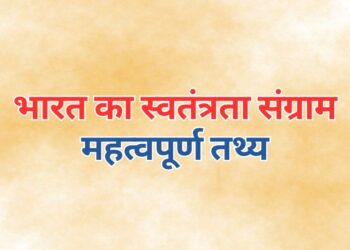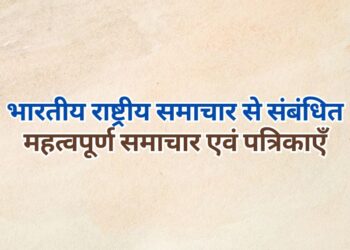भारत के प्राचीन इतिहास को समझने के लिए विभिन्न स्रोतों की गहन खोज की आवश्यकता है जो भारतीय उपमहाद्वीप में सहस्राब्दियों से विकसित सभ्यताओं, संस्कृतियों और समाजों के बारे में जानकारी प्रदान करते हैं। इन स्रोतों में पुरातात्विक खोजें, साहित्यिक ग्रंथ, पुरालेख शिलालेख, मुद्राशास्त्रीय साक्ष्य और विदेशी यात्रियों और विद्वानों के वृत्तांत शामिल हैं। इन विविध स्रोतों का विश्लेषण और संश्लेषण करके, हम प्राचीन भारतीय इतिहास की एक व्यापक कथा का पुनर्निर्माण कर सकते हैं।
- पुरातात्विक स्रोत:
पुरातत्व उत्खनन से प्राचीन भारत की भौतिक संस्कृति पर प्रकाश डालने वाली अनेक कलाकृतियाँ, संरचनाएँ और बस्तियाँ उजागर हुई हैं। भारतीय उपमहाद्वीप में मानव निवास का सबसे पहला प्रमाण पुरापाषाण युग का है, जिसमें मध्य प्रदेश के भीमबेटका जैसे स्थलों पर प्रागैतिहासिक चित्रों से सजे शैल आश्रय मिले हैं। हालाँकि, यह कांस्य युग की सभ्यताएँ हैं जो कुछ सबसे महत्वपूर्ण पुरातात्विक साक्ष्य प्रदान करती हैं।
सिंधु घाटी सभ्यता:
सिंधु घाटी सभ्यता, जिसे हड़प्पा सभ्यता के नाम से भी जाना जाता है, दुनिया की सबसे पुरानी शहरी सभ्यताओं में से एक है, जो लगभग 3300-1300 ईसा पूर्व फली-फूली। वर्तमान पाकिस्तान में मोहनजो-दारो और हड़प्पा, साथ ही भारत में कालीबंगन, लोथल और धोलावीरा जैसी साइटों पर खुदाई से परिष्कृत जल निकासी प्रणालियों, ईंट के घरों, सार्वजनिक स्नानघरों और अन्न भंडार के साथ सुनियोजित शहरों का पता चला है। अभी तक समझी न जा सकने वाली सिंधु लिपि में शिलालेखों वाली मुहरों की खोज से लेखन की एक प्रणाली का पता चलता है। सभ्यता के व्यापक व्यापार नेटवर्क, मेसोपोटामिया और मिस्र तक पाए गए मिट्टी के बर्तनों, मोतियों और मुहरों जैसी कलाकृतियों से प्रमाणित होते हैं, जो इसकी आर्थिक समृद्धि का संकेत देते हैं।
वैदिक काल:
वैदिक काल (लगभग 1500-500 ईसा पूर्व) की विशेषता वेदों की रचना है, जो हिंदू धर्म के सबसे पुराने पवित्र ग्रंथ हैं। ऋग्वेद, सामवेद, यजुर्वेद और अथर्ववेद सहित ये ग्रंथ प्राचीन भारत की धार्मिक मान्यताओं, अनुष्ठानों और सामाजिक संगठन के बारे में अंतर्दृष्टि प्रदान करते हैं। वे पशुचारण, कृषि और बलि अनुष्ठानों पर केंद्रित एक समाज का चित्रण करते हैं, जिसमें इंडो-आर्यन धीरे-धीरे गंगा के मैदानी इलाकों में बस रहे हैं और दास और दस्यु के नाम से जाने जाने वाले स्वदेशी लोगों के साथ संघर्ष में शामिल हैं।
- साहित्यिक स्रोत:
साहित्यिक ग्रंथ प्राचीन भारतीय इतिहास को समझने के लिए एक और महत्वपूर्ण स्रोत हैं, जो विभिन्न अवधियों और संस्कृतियों में आख्यान, इतिहास और दार्शनिक अंतर्दृष्टि प्रदान करते हैं।
महाकाव्य:
रामायण और महाभारत, जिनकी रचना 400 ईसा पूर्व और 400 ईस्वी के बीच हुई थी, लेकिन माना जाता है कि उनकी मौखिक उत्पत्ति सहस्राब्दियों पहले हुई थी, महाकाव्य कविताएँ हैं जो महान हस्तियों के जीवन, उनके कारनामों, संघर्षों और नैतिक दुविधाओं का वर्णन करती हैं। रामायण, जिसका श्रेय ऋषि वाल्मिकी को जाता है, राजकुमार राम के निर्वासन, राक्षस राजा रावण द्वारा उनकी पत्नी सीता के अपहरण और राम द्वारा अपने वफादार साथी हनुमान की मदद से उन्हें बचाने की खोज की कहानी बताती है। महाभारत, जिसका श्रेय ऋषि व्यास को जाता है, पांडवों और कौरवों के बीच संघर्ष के इर्द-गिर्द घूमता है, जिसकी परिणति कुरुक्षेत्र के महान युद्ध में हुई। ये महाकाव्य न केवल प्राचीन भारतीय समाज, संस्कृति और मूल्यों में एक खिड़की प्रदान करते हैं बल्कि नैतिक और दार्शनिक शिक्षाओं के भंडार के रूप में भी काम करते हैं।
पुराण:
पुराण, लगभग 300 ईसा पूर्व से 1000 ईस्वी तक रचित, प्राचीन भारतीय ग्रंथों की एक शैली है जिसमें ब्रह्मांड विज्ञान, पौराणिक कथाओं, राजाओं की वंशावली और धार्मिक शिक्षाओं सहित विषयों की एक विस्तृत श्रृंखला शामिल है। वे प्राचीन भारत के राजवंशीय इतिहास के पुनर्निर्माण के लिए महत्वपूर्ण स्रोत के रूप में काम करते हैं, भले ही पौराणिक कथाओं के तत्व आपस में जुड़े हुए हों।
- पुरालेख शिलालेख:
पत्थर, तांबे की प्लेटों और अन्य सामग्रियों पर उत्कीर्ण पुरालेख शिलालेख, प्राचीन भारतीय समाज के राजनीतिक, प्रशासनिक और सामाजिक-आर्थिक पहलुओं पर अमूल्य जानकारी प्रदान करते हैं।
मौर्यकालीन शिलालेख:
चंद्रगुप्त मौर्य द्वारा स्थापित और उनके पोते अशोक द्वारा समेकित मौर्य साम्राज्य (लगभग 322-185 ईसा पूर्व), शिलालेखों का एक महत्वपूर्ण संग्रह छोड़ गया। अशोक के शिलालेख, पूरे भारतीय उपमहाद्वीप और अफगानिस्तान और नेपाल तक पाए गए, बौद्ध सिद्धांतों के प्रति उनके पालन और उनके विषयों के बीच धम्म (धार्मिकता) और कल्याण को बढ़ावा देने के उनके प्रयासों की घोषणा करते हैं। ये शिलालेख मौर्य प्रशासन, अशोक की विजय और उनके बौद्ध धर्म के प्रचार के बारे में जानकारी प्रदान करते हैं।
गुप्त शिलालेख:
गुप्त साम्राज्य (लगभग 320-550 ई.पू.) को अक्सर प्राचीन भारतीय इतिहास का स्वर्ण युग माना जाता है, जो समृद्ध कला, साहित्य और विज्ञान की विशेषता है। गुप्त काल के शिलालेख, जैसे कि चंद्रगुप्त प्रथम, समुद्रगुप्त और चंद्रगुप्त द्वितीय जैसे शासकों के शिलालेख, उनकी विजय, कला और शिक्षा के संरक्षण और धार्मिक संबद्धता के बारे में विवरण प्रदान करते हैं। गुप्त युग में हिंदू धर्म और बौद्ध धर्म का संश्लेषण देखा गया, जो उस काल की कला और वास्तुकला में स्पष्ट है।
- मुद्राशास्त्रीय साक्ष्य:
प्राचीन भारतीय शासकों द्वारा चलाए गए सिक्के राजनीतिक अधिकार, आर्थिक समृद्धि और सांस्कृतिक आदान-प्रदान का ठोस सबूत प्रदान करते हैं।
मौर्य और गुप्तकालीन सिक्के:
मौर्य काल के सिक्कों पर शेर और हाथी जैसे प्रतीक अंकित हैं, जो शाही शक्ति और स्वदेशी धार्मिक रूपांकनों को दर्शाते हैं। गुप्तकालीन सिक्कों में शासकों, देवी-देवताओं की छवियां हैं, जो उनके शासनकाल के दौरान हिंदू धर्म और बौद्ध धर्म के संश्लेषण को दर्शाती हैं। ये सिक्के पुरातात्विक अवशेषों और ऐतिहासिक घटनाओं की डेटिंग के लिए महत्वपूर्ण कालानुक्रमिक मार्कर के रूप में भी काम करते हैं।
कुषाण सिक्के:
कुषाण साम्राज्य (लगभग पहली-तीसरी शताब्दी सीई) ने ग्रीक और प्राकृत में द्विभाषी शिलालेखों के साथ सिक्के जारी किए, जो उनके साम्राज्य की बहुसांस्कृतिक प्रकृति और हेलेनिस्टिक दुनिया के साथ उनकी बातचीत को दर्शाते थे। इन सिक्कों में कनिष्क और वासुदेव जैसे शासकों के साथ-साथ शिव, बुद्ध और इंडो-ईरानी देवता मिथरा जैसे देवताओं को दर्शाया गया है।
- विदेशी यात्रियों और विद्वानों के वृत्तांत:
विदेशी यात्रियों और विद्वानों के वृत्तांत बाहरी दृष्टिकोण से प्राचीन भारतीय समाज, संस्कृति और धर्म के बारे में बहुमूल्य अंतर्दृष्टि प्रदान करते हैं।
मेगस्थनीज:
चंद्रगुप्त मौर्य के दरबार में यूनानी राजदूत मेगस्थनीज ने “इंडिका” नामक कृति लिखी, जिसमें मौर्य समाज, प्रशासन और रीति-रिवाजों का विस्तृत विवरण दिया गया है। उनका विवरण प्राचीन भारत के राजनीतिक संगठन, शहरी जीवन और आर्थिक समृद्धि के बारे में बहुमूल्य अंतर्दृष्टि प्रदान करता है।
चीनी तीर्थयात्री:
फैक्सियन, जुआनज़ांग और यिजिंग जैसे चीनी तीर्थयात्रियों ने बौद्ध धर्मग्रंथों और शिक्षाओं की तलाश में चौथी और सातवीं शताब्दी ईस्वी के बीच भारत की यात्रा की। उनके यात्रा वृतांत गुप्त और गुप्त काल के दौरान भारतीय भूगोल, समाज, धर्म और संस्कृति के बारे में अमूल्य जानकारी प्रदान करते हैं। जुआनज़ैंग का “पश्चिमी क्षेत्रों पर महान टैंग रिकॉर्ड” भारतीय राज्यों, मठों और धार्मिक प्रथाओं के विस्तृत विवरण के लिए विशेष रूप से प्रसिद्ध है।
निष्कर्षतः, प्राचीन भारतीय इतिहास के स्रोत विविध और बहुआयामी हैं, जिनमें पुरातात्विक खोजें, साहित्यिक ग्रंथ, पुरालेख शिलालेख, मुद्राशास्त्रीय साक्ष्य और विदेशी यात्रियों और विद्वानों के वृत्तांत शामिल हैं। इन स्रोतों का विश्लेषण और संश्लेषण करके, इतिहासकार प्राचीन भारतीय सभ्यता की एक व्यापक कथा का पुनर्निर्माण कर सकते हैं, जिसमें सिंधु घाटी सभ्यता और वैदिक काल से लेकर मौर्य, गुप्त और गुप्त काल के बाद के युग तक इसके विकास का पता लगाया जा सकता है। ये स्रोत न केवल राजनीतिक और आर्थिक विकास पर प्रकाश डालते हैं, बल्कि प्राचीन भारतीय समाज के सामाजिक, सांस्कृतिक और धार्मिक पहलुओं की अंतर्दृष्टि भी प्रदान करते हैं, जिससे उपमहाद्वीप की समृद्ध और विविध विरासत के बारे में हमारी समझ समृद्ध होती है।














